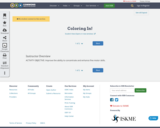
ACTIVITY OBJECTIVE: Improve the ability to concentrate and enhance fine motor skills.
- Subject:
- Early Childhood Development
- Psychology
- Special Education
- Material Type:
- Activity/Lab
- Author:
- CIPPO Egypt
- Date Added:
- 06/20/2022

ACTIVITY OBJECTIVE: Improve the ability to concentrate and enhance fine motor skills.
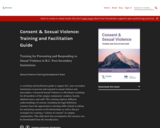
Training for Preventing and Responding to Sexual Violence in B.C. Post-Secondary Institutions
Short Description:
A workshop and facilitation guide to support B.C. post-secondary institutions to prevent and respond to sexual violence and misconduct. Consent & Sexual Violence is a 90-minute workshop for all members of the campus community: students, faculty, administrators, and staff. This training explores different understandings of consent, including the legal definition. Learners have the opportunity to develop skills related to asking for and giving consent in all relationships as well as discuss strategies for creating a “culture of consent” in campus communities. (The slide deck that accompanies this resource can be downloaded from the Introduction.)
Long Description:
A workshop and facilitation guide to support B.C. post-secondary institutions to prevent and respond to sexual violence and misconduct. Consent & Sexual Violence is a 90 minute workshop for all members of the campus community: students, faculty, administrators, and staff. This training explores different understandings of consent, including the legal definition. Learners have the opportunity to develop skills related to asking for and giving consent in all relationships as well as discuss strategies for creating a “culture of consent” in campus communities. (The slide deck that accompanies this resource can be downloaded from the Introduction).
Word Count: 24282
ISBN: 978-1-77420-102-2
(Note: This resource's metadata has been created automatically by reformatting and/or combining the information that the author initially provided as part of a bulk import process.)

The following resource provides an overview of the consultation model within the school-based system. The resources provided are recommended to assist new hires in orienting themselves to this model especially if they're transitioning from a medical mode/private practice setting.
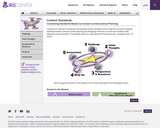
Teachers are required to implement the adopted content standards and to make the connection between standards-based curriculum and the planning and designing of lessons to ensure that students meet expected content standards. This Module serves as a basic guide for the process (est. completion time: 2.5 hours).
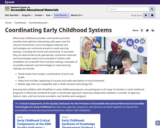
Coordinating Early Childhood Systems
Adults and a young child collaborating in an early learning classroom
While early childhood providers and families prioritize activities that optimize interactivity with peers and the natural environment, print and digital materials and technologies are commonly present in early learning settings, including the home and community. If and when they are determined to be appropriate, interactive materials and technologies need to be accessible if children with disabilities are to benefit from inclusive settings. Examples of accessible materials and technologies in early learning settings can include:
Tactile books that include a combination of print and braille
Video that includes captioning of sounds and audio description of visual elements
Mobile apps that are compatible with a child’s assistive technology (AT)
Ensuring that children with disabilities in early childhood programs can participate in all range of activities in early childhood programs is effectively achieved through a coordinated approach requiring collaboration between a number of agencies, federal, state, and local service providers, and families and caregivers.
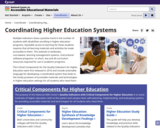
Coordinating Higher Education Systems
Adults in a higher education environment collaborating
Multiple indicators show a positive trend in the number of students with disabilities enrolling in higher education programs. Equitable access to learning for these students requires that all learning materials and activities be made accessible to them. This extends to textbooks, courseware, learning management systems, instructional software programs—in short, any and all curriculum resources required for use in academic programs.
The Critical Components for the Quality Indicators for Higher Education were first released in 2018 and include actionable language for developing a coordinated system that leads to the timely provision of accessible materials and technologies in higher education settings for all students who need them.
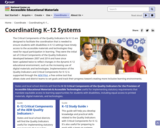
Coordinating K–12 Systems
Teachers collaborating in a K–12 environment
The Critical Components of the Quality Indicators for K-12 are designed to facilitate the coordination that is needed to ensure students with disabilities in K-12 settings have timely access to the accessible materials and technologies they need for equal participation in learning. They were the initial set of Critical Components of the Quality Indicators developed between 2007 and 2014 and have since been updated twice to reflect changes in the dynamic K-12 educational environment, such as the increasing use of digital materials and technologies. Implementation of the Quality Indicators and Critical Components for K-12 is supported through the AEM Pilot, a free online tool that allows state and district teams to set goals and track their progress toward creating more inclusive learning environments.
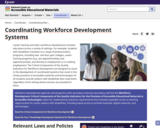
Coordinating Workforce Development Systems
Adults in a workplace environment collaborating
Career training and other workforce development activities take place across a variety of settings. For example, students with disabilities transition to a range of postsecondary programs, including two- and four-year colleges, career training programs (e.g., pre-apprenticeships and apprenticeships), and directly to employment or to seeking employment. The Critical Components of the Quality Indicators for Workforce Development are designed to assist in the development of coordinated systems that result in the timely provision of accessible materials and technologies for all students and job seekers with disabilities who need them, regardless of the setting where services are provided to them.
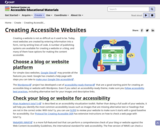
Creating Accessible Websites
Illustration of website icons surrounding a computer monitor
Creating a website is not as difficult as it used to be. Today, most websites are created by entering information into a form, not by writing lines of code. A number of publishing systems are available for creating a website or a blog, and many of them have options for making the content accessible.
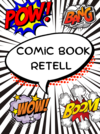
In this Unit Plan, Students will use Book Creator to create a comic of the story they have independently read in class. Students will independently use the resource I generated on how to use each function to create their comic. Then use the Criteria for Success ( cfs) to evaluate their own work, and share their work to peers.
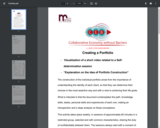
An individual portfolio is something like a visual curriculum to be constructed together with the people with disabilities, to support them in understanding the their own identity, so that they can determine their choices in the most assertive way and with a view to achieving their life goals.
Download the instructions to implement a workshop for the creation of personal portfolios.
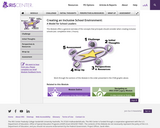
This Module offers a general overview of the concepts that principals should consider when creating inclusive schools (est. completion time: 2 hours).
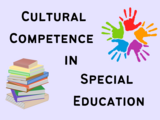
This resource is to educate others on the importance of cultural competence in special education and the lack of cultural awareness that is currently in special education classrooms. It includes history of special education and the laws surrounding it, the importance of cultural awareness and competence, what the current system is doing and why it does not work and what the future will hopefully look like for culture in special education.
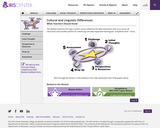
This Module examines the ways in which culture influences the daily interactions that occur across all classrooms and provides practice for enhancing culturally responsive teaching (est. completion time: 1 hour).
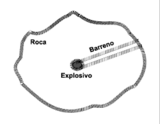
Conocimiento sobre la presión y colocación de explosivos
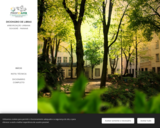
Este dicionário online de LIBRAS “Arborização Urbana – Goioerê – PR” é o produto educacional de uma pesquisa desenvolvida no Programa de Pós-Graduação em Rede Nacional para Ensino das Ciências Ambientais (PROFCIAMB) da Universidade Estadual de Maringá – Campus Regional de Goioerê – PR. Uma ferramenta de consulta que traz um conjunto de lexicais e características de alguns termos ambientais e alguns tipos arbóreos do município de Goioerê – PR na Língua Brasileira de Sinais. O dicionário virtual está disponível em: https://dicionario-de-libras---arborizacao-urbana.webnode.page/. O vídeo é executado pela Tradutora e Intérprete de Libras, pesquisadora proponente, e pelo Professor Bilíngue Surdo. O referido dicionário propõe um suporte pedagógico de recursos visuais que irá contribuir para assimilação do currículo escolar, expansão na comunicação entre pessoas surdas e ouvintes, e promover à acessibilidade digital.
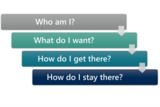
This resource from the Washington Center for Deaf and Hard of Hearing Youth provides guiding questions and resources to help student reach their full potential as they work towards their post high school and transition goals.
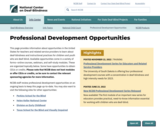
This page provides information about opportunities in the United States for teachers and related service providers to learn about deaf-blindness and instructional practices for children and youth who are deaf-blind. Available opportunities come in a variety of forms—online courses, webinars, and self-study modules. These are organized topically below. Some have opportunities to obtain CEUs or credits. Please note that NCDB does not host modules or offer CEUs or credits, so be sure to contact the relevant sponsoring agencies for more information.
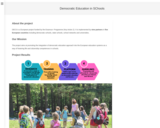
DESC’s general objective (GO) is to promote the integration of democratic education methodology into the European education systems as a way of fostering life competences and citizenship competences in schools. The DESC general objective is supported by a number of specific objectives.
Co-funded by the Erasmus + Programme of the European Union. The European Commission's support for the production of this publication does not constitute endorsementof the contents, which reflect the views only of the authors, and the Commission can not be held responsible for any uwe which may be made of the information contained therein.
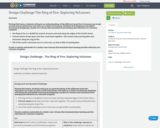
During this lesson, students will gain an understanding of the different ways that volcanoes can erupt, as well as how land forms over time as a result of volcanoes. Students will integrate and exhibit learning by designing a model of a volcano that simulates heat sensing and vibration of a volcanic eruption. The Ring of Fire is a 40,000 km stretch of ocean and land along the edges of the Pacific Ocean.Tectonic plates break apart and then crash back together. This causes many earthquakes and volcanoes along the ring of fire.755 of the earth’s volcanoes occur in this area, as well as 80% of earthquakesCreate a system and model of a cinder cone volcano that simulates heat sensing and the vibration of a volcanic eruption.